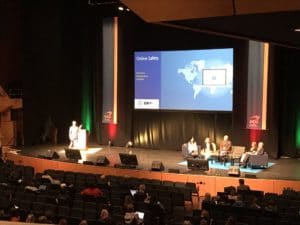Code of Practice for Employers and Employees on the Prevention and Resolution of Bullying at Work
Recently published Code of Practice (COP) developed by the Health and Safety Authority and the Workplace Relations Commission and published in January 2021.
Regardless of where we work, when we work or how we work, workplace conflict can occur. Where people are involved, different perspectives meet and this can result in misunderstandings, misgivings, and where things remain unclear and vague, disharmony.
Now that we are distanced, we have less ability to receive communication in its fullest sense. We do not get the body language, the levity that might be in a comment: the nuance of a spoken word is lost if delivered by email. This new climate of work can result in increased misunderstanding and a sense of not really fully appreciating what a person means, when they ask something of you.
The last thing we need now is increased confusion and conflict from our work. Yet as we are remote working, the atmosphere and general collegiality around our work, can take a nosedive.
Difficulties in relating brought about by distance relating and a scarcity of human presence can prove stressful. Stress be a cause of as well because of bullying. When this occurs, every organisation needs to have a system in place to process such matters and manage a complaint to a resolution of some sort.
On that point, the new COP is an update and upgrade on two previous Codes – both agencies had separate Codes related to their distinct legislation prior to this. As Codes are not of themselves legislation, but a strong standard set in line with legislation, any Code must show a link between its contents and standards set and relevant legislative powers. In this case, both agencies have underpinning legislation in the guise of various Industrial Relations Acts (WRC) and the Safety, Health and Welfare at Work Act (2005) (HSA)
The COP was developed with inputs from employer body IBEC and employee representative body ICTU, as well as employment expertise from the Department of Public Expenditure and Reform (DPER) over the past two years. Further public consultation and inputs from private and commercial parties was undertaken. The new COP is now welcomed as a replacement of the previous Codes promoted by each agency, the HSA’s from 2007 and the WRC’s from 2002.
This new COP is more comprehensive on the informal approaches to dealing with bullying complaints at enterprise level.
It has a new second ‘filter’ stage, when employers can bring a problem-solving approach to issues where bullying is a feature or an alleged feature of a troubled relationship at work. This was added due to the nuanced nature of human behaviour at work and the fact that a person’s perception is heavily influenced by their attitude and pre-existing suspicion.
A situation where bullying is cited may well, at times, be better managed to the satisfaction of all, by slowly unravelling the behaviours and trying to reduce the tension and hurt around the deteriorating relationship.
Giving more time, space and energy to such a resolution, early in the process, can often yield more positive results than formal legalistic approaches further into the issue.
The joint COP also highlights to people who are considering bringing a bullying case, the seriousness of making any complaint citing bullying. Bullying can be wrongly used to cover many difficult issues, which are not bullying.
The COP also highlights the serious mental health fallout from being bullied, and outlines the behaviours that should not be tolerated between people at work. It highlights the employer’s duty to prevent improper conduct and ensure fair and reasonable supervision and management. It gives employers guidance on the need for competence across the systems of work and a proper working complaints procedure within an Anti-Bullying Policy, which all employees are aware of, and signed up to, as part of induction programmes.
The COP also addresses recent Irish court judgements on bullying. These judgements emphasise the requirements needed for a case to be considered one of bullying. These judgements held that occasional disputes, irregular disagreements and even personality fallouts, do not, of themselves, meet the criteria for bullying.
Bullying cases are based on regular, repeated, serious, traumatic targeted ill-treatment of a person or persons, and therefore, employees making such a claim should know of this standard, and apply it. Employers processing various complaints should have some direction on what to process as bullying and which disputes can, and should be, processed otherwise.
Finally, the new COP, being a joint code, aligns the systems in place at State level. It gives some examples of what is and what is not considered under the bullying heading, and differentiates harassment as a distinct set of behaviours, under nine specified grounds. Harassment cases are processed separately to bullying and come within the remit of the Irish Human Rights and Equality Commission (IHREC).
WRC/HSA Joint Code of Practice on the Prevention and resolution of Bullying at Work 2021 – Main additions:
• Increased focus on the initial employer classification of a complaint: whether it is a general conflict, as case of alleged bullying, a case of alleged harassment, or some other workplace issue wrongly labelled.
• Increased direction and advice on informal resolution of complaints of bullying within the work area.
• Reiteration of sanction for maliciously or carelessly making a bullying complaint.
• Clarity on the roles of both agencies and where they overlap and diverge.
• Clarity on the legal finding of Irish courts to ensure proper assessment of bullying complaints.
• Clarity from recent Irish court rulings on bullying investigations and the rights of various parties, including employer role.
• Clarification on follow-on processes for formal investigation of bullying cases.
Read it here: Code of Practice for Employers and Employees on the Prevention and Resolution of Bullying at Work




